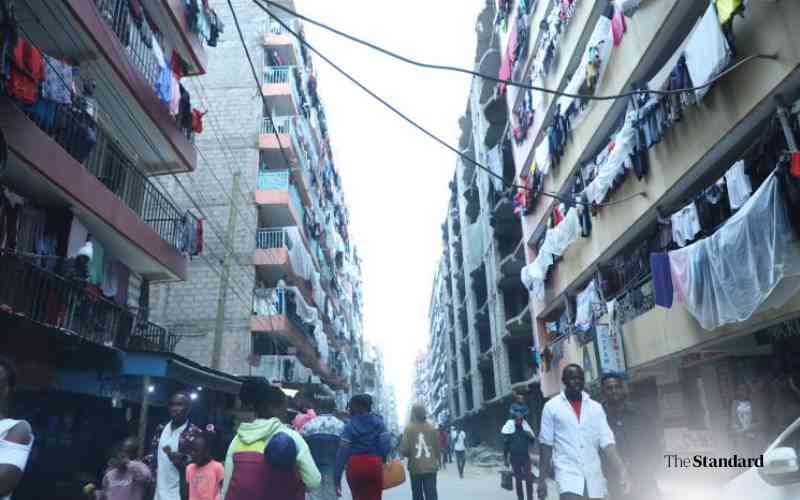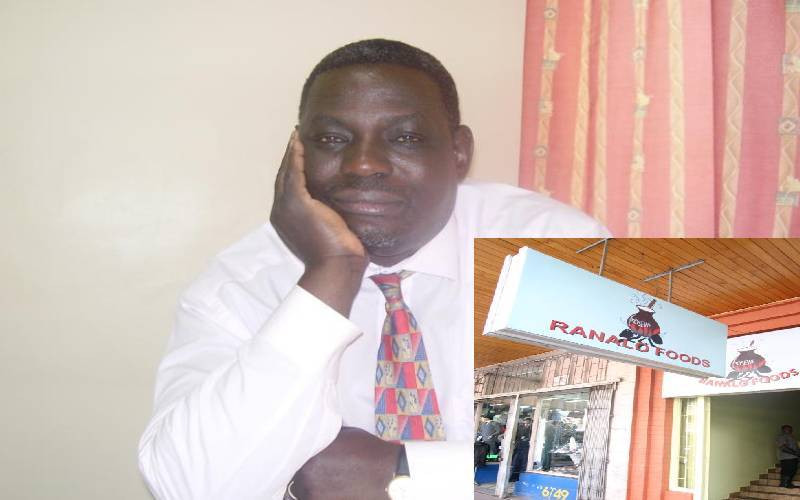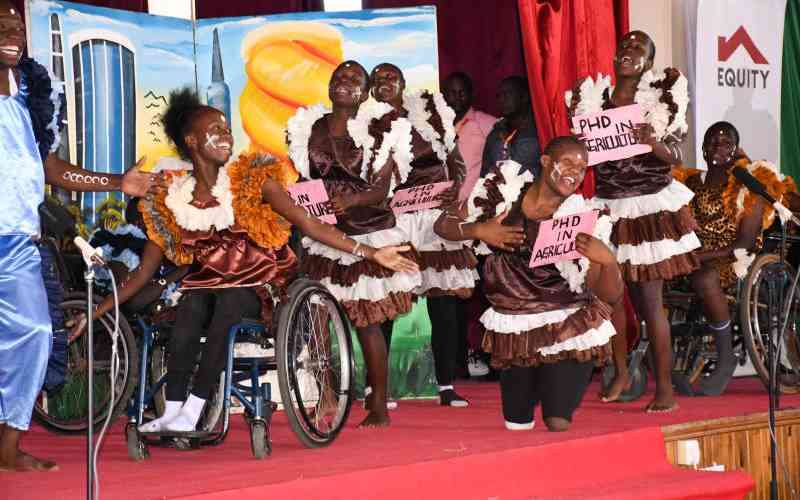 |
|
Naomi's village pioneer class |
By Charles Ouko
‘Hope begins, when a child belongs.”
This is the conviction that drives Robert Mendonsa and his wife Julie.
With this powerful statement imprinted on their hearts, this American surgeon and his wife embarked on a life-long mission to make a difference in the lives of Kenyan children.
Their staging post? The trucking town of Mai Mahiu, at the foot of the Great Rift Valley and an hour’s drive from the capital city Nairobi.
There they established Naomi’s Village Children’s Home that opened its doors in January 2011 to 14 of its first beneficiaries. In the words of the Mendonsas, “Looking into the embittered eyes of some Kenyan orphans, one may conclude they also believed God had abandoned them.”
The home takes in orphans, children from families languishing in abject poverty and families whose parents suffer mental or physical disabilities or where the home environment is unhealthy for the children. By last month Naomi’s Village had enrolled 44 orphans, all aged under 12. As the facilities are further enhanced on the five-acre campus, the plan is to grow the enrolment to 100 children. Credible studies indicate that 700 children are orphaned daily in Kenya.
Behind every story there is the man running with the vision, and so who exactly are Robert and Julie Mendonsa? .
Robert (Bob), 47, is a US-trained orthopaedic surgeon while Julie, his wife of 22 years, is a teacher. Dr Mendonsa holds degrees from Baylor University and did his graduate studies in trauma surgery at the University of Texas Medical Branch (UTMB) in Galveston. Bob did five years of orthopaedic surgery residency at UTMB and then worked another 11 years in private practice in the Dallas area and it was during this time that the Mendonsas made contact with Kenya.
Starting 2003 the couple, both born again Christians, begun to make yearly trips to Kenya, with Bob often taking one or two months to work as a volunteer orthopaedic surgeon at the AIC KIjabe Mission Hospital.
Services at both the 267-bed AIC Kijabe Mission Hospital and the neighbouring 30-bed CURE International Children’s Hospital are heavily subsidised, and thus attract many tragic cases of patients who cannot otherwise afford the high quality of health care offered, but who are in dire need of the same. It is while treating many such cases, that Bob and Julie’s vision to start Naomi’s Village was strengthened.
The Mendonsas thus moved to Kenya in 2008 after selling their home in the US. Land was identified and later purchased in September 2009 and construction commenced in November 2009, with the doors opening to the first batch of children in January 2011.
Children’s homes are plentiful in Kenya, and sadly many are disreputable. Some have been in the news for all the wrong reasons, chief among them financial impropriety by the owners or founders.
Bob has over the past five years been the orthopaedic surgeon of choice for injured Kenyan international athletes. He has treated and operated on sports men and women from football and volleyball, swimmers, tennis players and rugby players.
His list of rugby clients include players with the highest profile in both the Kenya Sevens and 15s set up. As a matter of fact it was the information from these players, about this ‘mzungu surgeon at Kijabe’, that set me on the trail of Bob.
Stay informed. Subscribe to our newsletter
Among others he operated on were Dennis Mwanja, Sydney Ashioya, the Simiyu brothers Ian and Victor, and most recently Dennis Ombachi. Speaking on this aspect of his work, Bob says: “The most common injuries that Level One sports people suffer from in contact sports are anterior crucial ligament tears and meniscus tears. These require reconstructive surgery, to enable the athlete return to sports.”
He estimates that approximately 50 Kenyan rugby players have been treated at the Kijabe clinic in the past five years.
Now working full time at Naomi’s Village since January 2011, Bob has to all intents and purposes retired from active surgery work, restricting his schedule at the Kijabe Sports Clinic to the barest minimum, not exceeding two visits weekly.
So what sets Naomi’s Village apart from other children’s homes.
First is the ownership and administrative structures that make for several layers of accountability. Run by a board of trustees, of mainly US nationals, Naomi’s Village is registered as a donor-funded charitable entity in the United States.
It receives its funding from individuals, churches, families and organisations to cover its monthly operating budget in Kenya and any designated projects. Funding is at present wholly from beyond Kenya and not by design.
The board members visit Kenya periodically to confirm proper usage of the funds received, compile reports on the same and also to assess the needs of future projects.
With two teenage children Emily, 15, and Will, 14, attending a local mission school in Kenya, the Mendonsas are the only full time US nationals working at the children’s home.
Naomi’s Village has a staff component of 40 full time workers headed by three directors, each in charge of Finance, Facilities and Education. All are Kenyans.
Second is the quality and variety of the facilities—first class yet not luxurious and deliberately so.
The main home is 9,500 square feet comprising the regular amenities such as a large dining hall that doubles as a multi-purpose hall. Caretaker Bonface Kuria and his family have a purposely built apartment that allows them to live full time on site.
In June 2013, a 29-person capacity fully furnished guest house was opened. Not for profit—it charges nominal rates and is for exclusive use by the different inbound mission teams, mainly from the US who come in to carry out mission work in the surrounding community. These include two large IDP camps across the road from Naomi’s Village, of which the best known is Vumilia Camp.
The story of Naomi’s Village would be incomplete without mentioning Cornerstone Preparatory School. It opened its doors to its first batch of 31 children in January this year.
Julie, the teacher, takes up the story behind the vision of Cornerstone and the envisaged high school. “The overwhelming lack of quality education is devastating children, paralysing the economy and hindering the nation’s general well being”.
“Most schools do not have electricity, running water or basic adequate supplies of text books. It is quite rare to find computers or other current technology within schools,” says Julie. Cornerstone Preparatory Academy has classes up to Standard Six for its current enrolment of 31.
When its uptake is complete, it is proposed that its teacher-student ratio will be set at 1:20.
Currently housed on the children’s home site, plans are in progress to put up a campus and a secondary school. The projected cost of buying an additional five-acre parcel of land and building an entire primary school is Sh85 million. These would be for the construction of classrooms, a computer lab, administrative block and staff room.
This month, the Mendonsas will join the rest of the board of trustees on a two-week fundraising trip in the US.
The plan is to raise at least Sh43 million by the end of this year to allow construction work to begin in January. The primary school campus should be fully built by the following January.
When this is complete, there are plans to secure a 40-acre parcel of land, upon which will be built the Cornerstone Christian Secondary school, a teenage house and the Rift Valley Fellowship Church.
 The Standard Group Plc is a
multi-media organization with investments in media platforms spanning newspaper
print operations, television, radio broadcasting, digital and online services. The
Standard Group is recognized as a leading multi-media house in Kenya with a key
influence in matters of national and international interest.
The Standard Group Plc is a
multi-media organization with investments in media platforms spanning newspaper
print operations, television, radio broadcasting, digital and online services. The
Standard Group is recognized as a leading multi-media house in Kenya with a key
influence in matters of national and international interest.
 The Standard Group Plc is a
multi-media organization with investments in media platforms spanning newspaper
print operations, television, radio broadcasting, digital and online services. The
Standard Group is recognized as a leading multi-media house in Kenya with a key
influence in matters of national and international interest.
The Standard Group Plc is a
multi-media organization with investments in media platforms spanning newspaper
print operations, television, radio broadcasting, digital and online services. The
Standard Group is recognized as a leading multi-media house in Kenya with a key
influence in matters of national and international interest.






